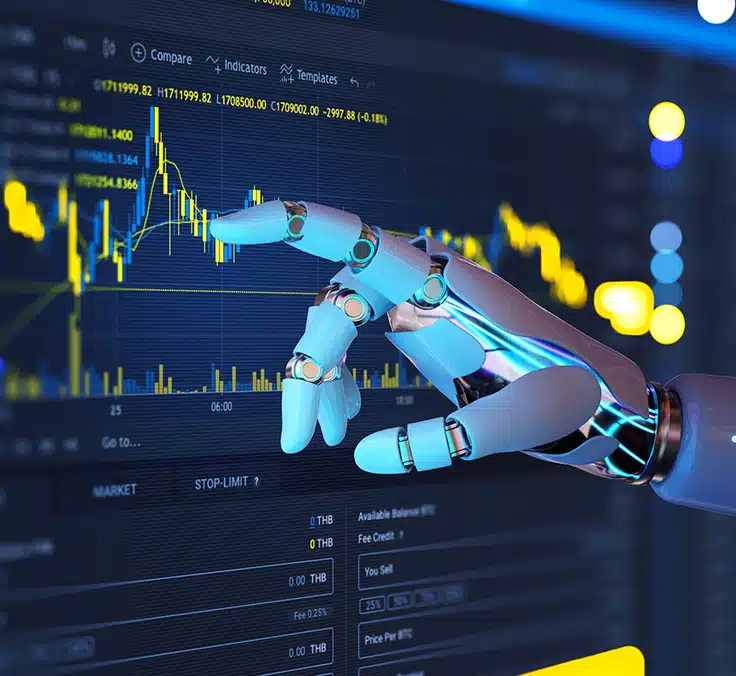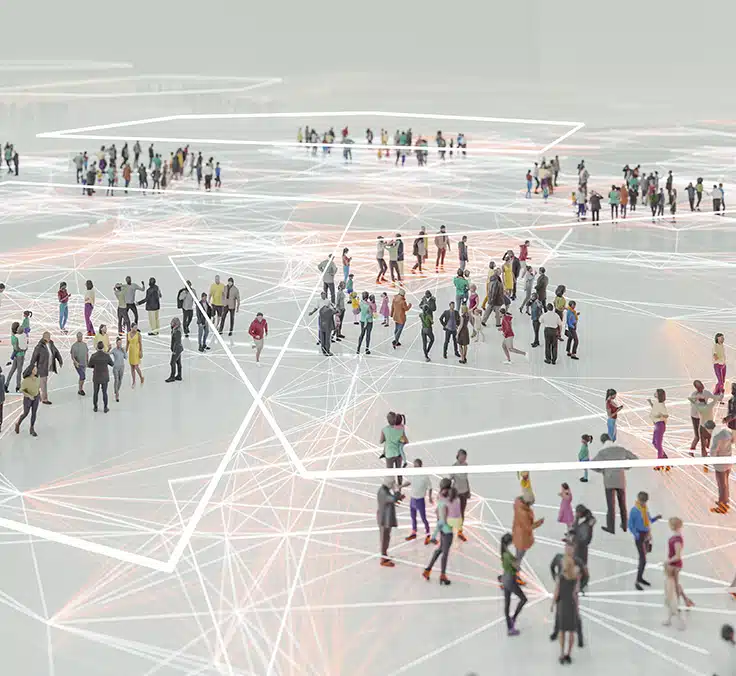How is AI reshaping the innovation process within companies?
The use of AI in innovation, as in other areas, must be carefully defined to ensure its application is ethical, transparent, and human-supervised. In this context, automating certain processes should be balanced with human oversight to avoid errors or biases in generative models.
So, how can innovation teams maximize these capabilities and successfully leverage AI? At MAPFRE, we’ve created a “Map of AI Possibilities in Innovation Processes” that includes insights from articles, academic papers, event presentations, and our own research.
The innovation process involves several stages, and AI can play a pivotal role as an assistant at each one. From identifying opportunities to implementing solutions, AI enhances agility and enriches content. Below, we explore how AI can be integrated into each phase.
Challenge phase
The first phase of the innovation process involves identifying and understanding the problem or need to address. At this stage, AI can be a valuable tool for collecting and analyzing large volumes of market data, enabling a more precise diagnosis.
AI-driven market and competition analysis helps uncover key trends, identify key industry players, and forecast future scenarios. With AI tools, teams can work more efficiently and partially automate tasks, always under supervision, such as competitor analysis, Porter’s Five Forces, or the PEST framework. AI can also assist in Social Listening, analyzing online conversations to detect emerging trends. These activities collectively help us understand the challenge.
Another key aspect is user exploration. Here, AI can support us in preparing for interviews (planning, scripts, supporting materials), and in some cases, we can complement human-to-human interviews with synthetic interviewers or synthetic users.
Lastly, AI can help synthesize the findings from the exploration phase by generating drafts of common templates like the Empathy Map, Persona/Archetype, or Customer Journey Map, as well as aiding in the extraction of lessons learned. As a complement to human judgment, AI can also assist in critically analyzing opportunities (e.g., through a SWOT analysis) or simulating potential future scenarios.
Idea phase
Once the challenge is defined, the idea phase focuses on generating innovative solutions. AI serves as an additional creative resource, integrating into the team to strengthen its capabilities. Here, AI can reinforce the team’s creativity by facilitating idea generation using techniques such as the SCAMPER method, rotational brainwriting, random stimuli, or role-playing. We can also leverage generative AI in a more flexible way, asking it to propose ideas for a specific challenge and adjusting the “temperature” or creativity level of the large language model (LLM).
Once ideas are generated, AI can help us classify, document, refine, iterate, and analyze them. It can automatically categorize ideas, complete a basic profile for each one, and even refine and evolve highly abstract concepts.
Concept phase
Once the best ideas are selected, they need to be developed into more refined concepts. AI tools can support this process by using data from the previous phase to generate initial drafts of the value proposition or a list of product or service features.
We can also leverage AI to create a Business Model Canvas and provide an initial approximation of key metrics such as market size, revenue, costs, and profit margins for our concept.
Then, when communicating our concept for internal sales, generative AI’s ability to create text and images or rewrite content to match a desired tone and style can be a powerful ally. It can enhance the human team’s efforts and elevate the impact of the sales pitch and its supporting materials.
Prototype phase
In this phase, AI accelerates the prototyping of artifacts for interviews and experiments. Most traditional prototyping tools (e.g., Figma, Canva) have integrated generative AI, and new tools entirely based on these capabilities have emerged (e.g., uizard.io, builder.ai). This enables us to shorten the iterative cycle of concept – prototype – test – measure – adjust.
AI can also assist in validation interviews in the same ways it supports exploration interviews, such as preparing scripts, creating supporting materials (prototypes and other artifacts), or synthesizing information from transcriptions.
When conducting business experiments to validate products or services by testing the real-world behavior of actual users in the market, the use of independent agents is being proposed. These AI models, connected to the “real world”, can perform actions like making purchases, processing payments, sending emails, making phone calls, and consuming third-party services via API. This enables them to test new products or services in the market without human intervention, revealing which ones succeed. However, the lack of supervision may introduce operational, ethical, reputational, or regulatory compliance risks, which makes this approach unadvisable at present.
MVP and pilot phase
In the Minimum Viable Product (MVP) phase, particularly during MVP development, generative AI assistants can be used for software development. Tools like GitHub Copilot help us program applications or websites more efficiently.
There are also generative AI tools for digital business that enable us to create text, images, or videos for our digital product and service materials, translate between languages, or make hyper-personalized versions of content.
Conclusions
AI can support many activities within the innovation process, enabling us to reduce timelines and enrich content.
But it should be viewed as a complement to, rather than a replacement for, the human innovation team. AI will never replace people, and human oversight will always be necessary. Innovation is also one of the areas where the principle of working “with and for people” is most relevant, as it focuses on understanding and addressing the needs of customers and others in the value chain, such as distributors, suppliers, and service operators.
The use of AI tools comes with inherent risks. We must always ensure responsible use and remain mindful of key considerations such as personal data management, intellectual property, privacy, security, biases and discrimination, accountability, and regulatory compliance.
RELATED ARTICLES:




